The Alco RS-32 and RS-36, four-axle, second-generation diesel road switchers issued by Atlas Model RR Co. more than 10 years ago, have been upgraded and re-released as part of the company’s Trainman Gold line. We reviewed the first Atlas model in May 2007. This latest review sample has been outfitted with an ESU LokSound Select dual-mode sound decoder.
The prototype. Alco introduced the 2,000-hp RS-32 in 1961, intending it to compete with second-generation four-axle diesel-electrics like Electro-Motive Division’s GP20 and General Electric’s U25B. But while those locomotives sold hundreds of units to railroads across the country, just 35 of the 251C-engined Alcos were sold. Twenty-five went to the New York Central; the other 10 were sold to the Southern Pacific.
Alco tried again in 1962, outfitting the same body with an 1,800-hp 251B engine and designating it the RS-36. This version did slightly better than its predecessor, selling 40 locomotives to a half-dozen railroads. Though they may not have sold well initially, the railroads that bought Alco’s RS-32 and RS-36 seem to have liked them, as they proved to be cheap and reliable. Five are still in service today on short lines and excursion railroads.
Once over. Our sample model is decorated for the Norfolk & Western, an RS-36 that started out life on the Nickel Plate Road. The model closely resembled photos of the prototype, both pre- and post-N&W purchase, published in the March/April 2005 issue of Diesel Era.
As its prototype appeared in the early 1970s to 1980s, the model is painted in a simple black dip scheme. The black paint is smoothly and evenly applied. There’s a small void in the large “NW” herald where it crosses a panel seam, but other than that, the white lettering is crisp and opaque. The small warning labels are legible under magnification.
All the major dimensions I measured matched drawings published in the October 1988 issue of Mainline Modeler. Atlas’ model has a low short hood and the Mainline Modeler diagram is of a high-short-hood version, so some details differ. Most details match, though, such as the large side grills, rooftop fan, nose-mounted brake wheel, hood doors, fuel tank, and truck details.
The body shell details are finely molded, as are the truck sideframes, which have separately applied brake cylinders. The handrails are molded in black slippery engineering plastic and are slightly thicker than the prototype. Though grab irons aren’t included, drill starter points are molded into the shell.
The locomotive’s blackened metal wheels are in gauge, and its plastic Accumate magnetic knuckle couplers are mounted at the correct height.
DC and DCC testing. Our sample locomotive came equipped with an ESU LokSound Select dual-mode sound decoder. This means it will operate, with sound, on either Digital Command Control (DCC) or direct-current (DC) layouts. I tested our review sample first under DCC.
Pressing function key 8 (F8) woke up the engine with a characteristic Alco burble. The engine responded in speed step 1 with a 1 scale mph roll, perfect for switching. At speed step 28, it topped out at 62 scale mph, which is only a bit slower than the prototype’s 70 mph top speed in freight gearing.
I also tested the locomotive under direct current. Though most dual-mode sound decoders take a fairly high voltage to respond under DC, the Atlas model had a relatively broad response range. At 6.5V, I heard that familiar Alco startup sequence. The engine started rolling at 7.5V at a nice, slow switching speed. The locomotive topped out at 58 scale mph at 12V – again, slower than the prototype, but fast enough for most layouts.
Sound effects under DC were limited to the engine RPM, which ramped up and down appropriately with the throttle setting. Under DCC, I was able to trigger the bell, horn, coupler clank, dynamic brake, and other sound effects, as well as control the directional lighting. Function key 8 triggered a startup/shutdown sequence when the locomotive was idle; when moving, F8 muted the engine.
I was impressed with the engine’s pulling power. On our test bench force meter, the locomotive mustered 2.4 ounces of drawbar pull, which is equivalent to 33 HO scale 40-foot boxcars on straight and level track. In a real-world test on our Milwaukee, Racine & Troy house layout, the locomotive pulled nine 60-foot freight cars up a curving 3 percent grade without slipping. It also ran forward and backward through a ladder of no. 5 turnouts without derailing.
Outdoing its prototype. Atlas’ re-released RS-36 is a solid performer, impressive in its powerful drawbar pull, smooth low-speed operation, and authentic sound effects. With a few added details, like wire grab irons, uncoupling levers, and lift rings, it could be a real standout on a 1960s-1980s HO scale layout. Its prototype might not have impressed the railroading world, but Atlas’ model shouldn’t have that problem.
Manufacturer
Atlas Model Railroad Co. Inc.
378 Florence Ave.
Hillside, NJ 07205
www.atlasrr.com
Era: RS-32, June 1961 to present; RS-36, February 1962 to present
Road names: RS-36: Norfolk & Western (black and white); Apache Ry. (Bicentennial paint scheme, three road numbers); Ferrocarriles Nacional de Mexico (National Railways of Mexico); Livonia, Avon & Lakeville (one number); and Ontario Central (one number). RS-32: Central Vermont (one number), Chicago & North Western, and Lamoille Valley (chop-nose ex-Duluth, Winnipeg & Pacific RS-11, one number). Two numbers each unless noted. Both body styles also available undecorated, with or without dynamic brakes.
Features
• Accumate magnetic knuckle couplers, at correct height
• Blackened metal wheels, in gauge (all eight pick up current)
• Directional light-emitting-diode lighting
• Drill starter points for user-installed grab irons (not included)
• Dual-mode ESU LokSound Select Digital Command Control sound decoder
• Engineer and fireman figures in cab
• Five-pole, skew-wound can motor with dual flywheels
• Recommended minimum radius: 18″
• Weight: 10.4 ounces





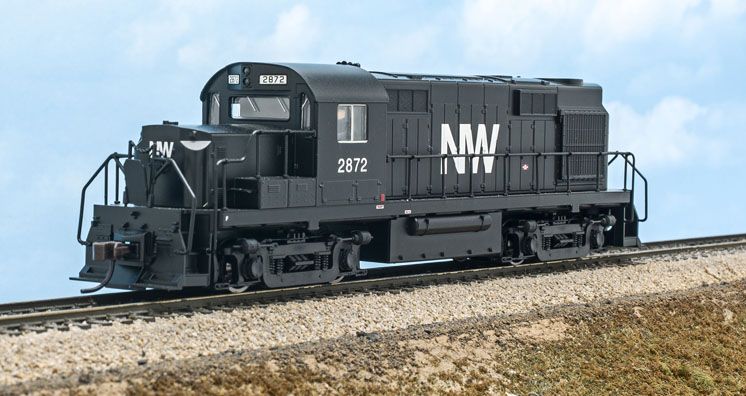
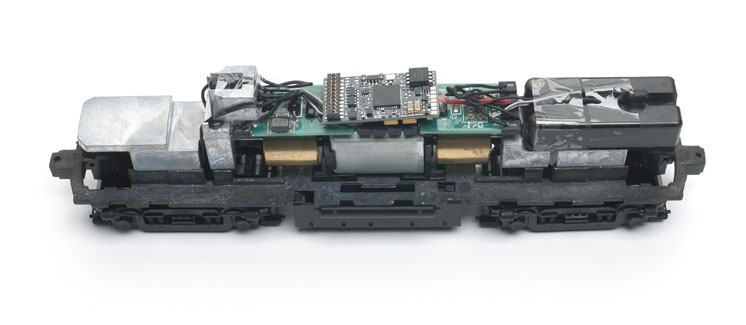
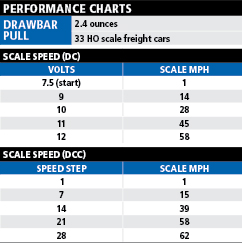

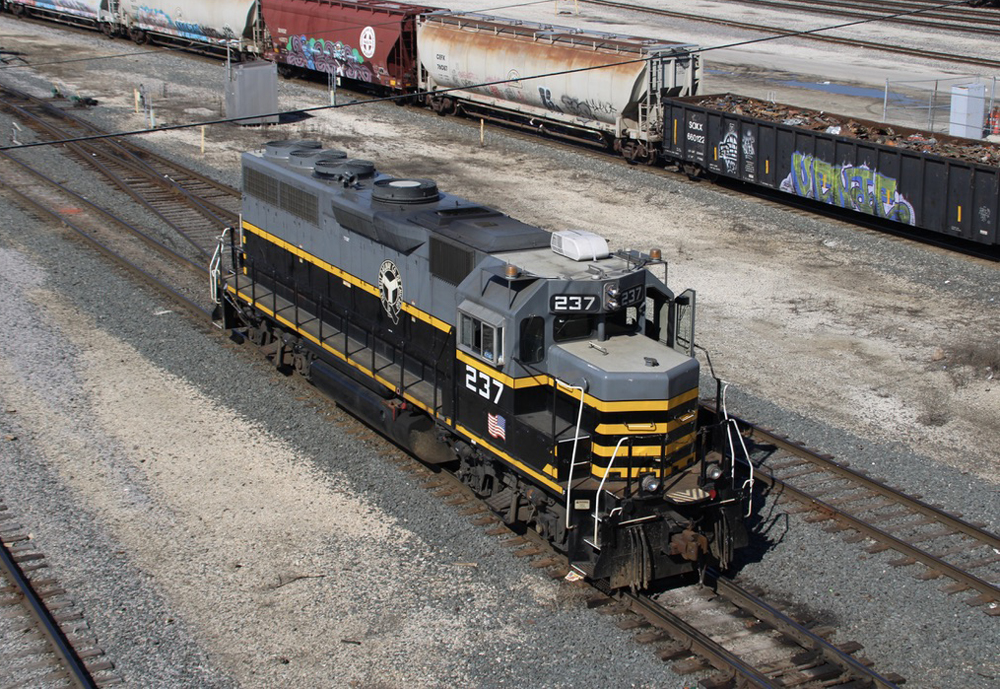
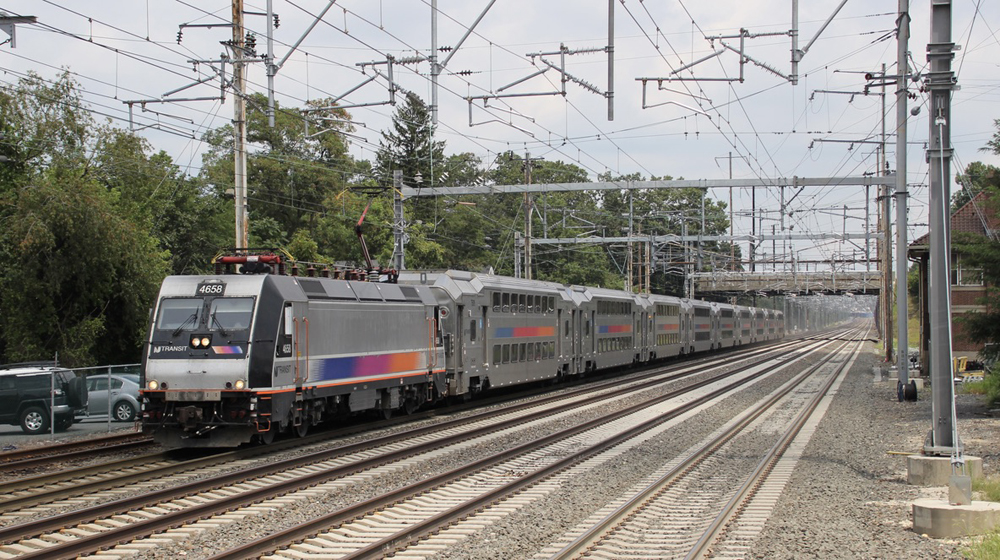

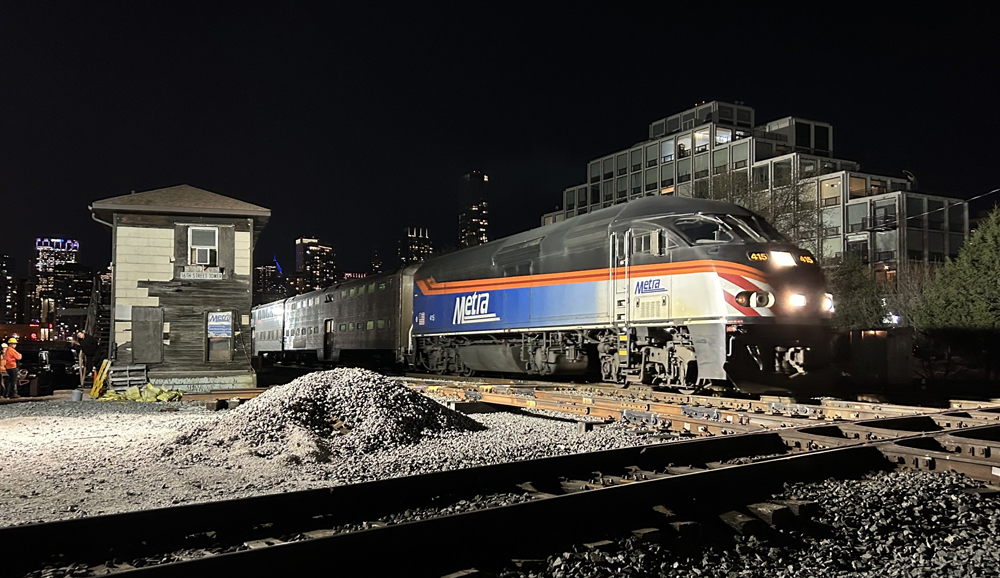




What year did the N&W sell or scrap these engines. I run a short line in the period 1955 to1965 and could use this power.
J Anderson in West Columbia,S.C.